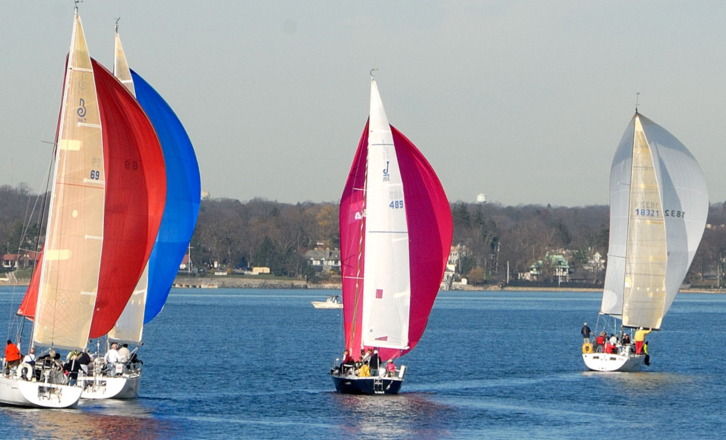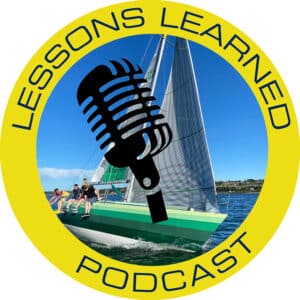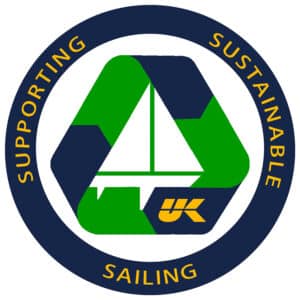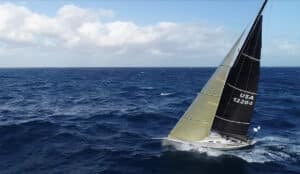Last Thursday night during our evening racing series, I got pushed over the line early and had to restart. There were only three boats in our class—it’s still early in the season—but it was still good competition. We worked the shifts and the current on the first leg of a windward/leeward race and, by the time we got to the top mark we were two lengths behind the second boat and probably 14 lengths behind the leader. The challenge we faced was how to making gains two leading boats on the downwind leg.
Spoiler Alert: we did pass the second-place boat and almost nipped the leader on elapsed time – but we did win on a corrected basis. But what are the things we did that made the difference? Here’s a list:
-
In the lulls, we heated up our course and burned down in the puffs. Sure, that’s not rocket science; however, we know enough not to get greedy in either direction. If we went too high or too low, we’d be sailing a poor VMG and could have hurt ourselves.
-
The trimmer, tactician, and I (on helm) shared a steady conversation of data inputs. The tactician called puffs, the trimmer indicated increases and decreases in pressure on the sail/sheet, and I let them know if I was heating up the course or soaking to leeward.
-
We didn’t let ourselves become mesmerized by the instruments. Sure, they help; but they provide data…not decisions. And, their readings lag behind the actual boat changes. We gained by “seat-of-the-pants” sailing. Feeling the boat slightly heel or flatten. Listening to the volume level of the water rushing past the transom. Getting our heads out of the boat…watching how we were doing versus the competition. If you only watch the instruments, you end up over steering. Most of the times if you sail by the speedo, the speed will crash and you’ll have to turn up a lot to get your speed back. But if you can hear or feel the speed going down, you can correct when you have only lost a few tenths.
Soaking down promptly when our speed increased allowed us to pull even and three lengths below the second-place boat. When it was time to gybe we were ahead.
-
We avoided small boat traffic when we could. With the smaller boats starting first, you end up having to wind your way through a crowd sometimes. We picked our holes better than our competition.
-
We didn’t get tense. OK, a Thursday night beer can race isn’t the America’s Cup…but you can still get worked-up if you’re not careful. After we restarted, we left that faux pas behind us and returned to our game plan which was to tack to port soon after the start.
-
Finally, we were sailing with friends…so we had a great time and, in the end, when we corrected out to win our division, we rediscovered why it’s called a beer can race.
See you next Thursday night???





Yep!
I have crewed with many skippers, and some of them love, and I mean love in all caps, instrument sailing. Usually those are former pilots. "instrument flying".
But to me, it’s the sails that are telling you what to do, how to steer, and what the wind is doing. The sails are the instruments.
Yep!
I have crewed with many skippers, and some of them love, and I mean love in all caps, instrument sailing. Usually those are former pilots. "instrument flying".
But to me, it’s the sails that are telling you what to do, how to steer, and what the wind is doing. The sails are the instruments.
In future, it would be helpful if you would explain terms like "heated up our course and burned down in the puffs" and "Soaking down".
It might be common parlance for professionals, but amateurs like myself struggle with it.